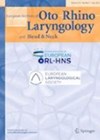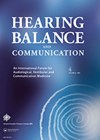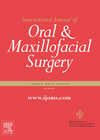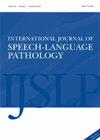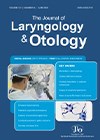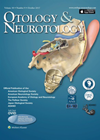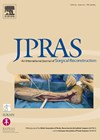
Journal Reviews
Idiopathic sudden sensorineural hearing loss and vertigo
This prospective longitudinal study evaluated vestibular function inpatients with idiopathic sudden sensorineural hearing loss (ISSHL) using caloric and video head impulse tests. All patients were admitted for treatment of their ISSHL and divided into two cohorts depending on presence or...
Tympanometry with cochlear implants
Multifrequency and multicomponent tympanometry enables evaluation of minute changes in the middle ear system as well as changes in resonant frequency. Change in resonant frequency would indicate a change in the natural characteristics of the middle ear, such as mass...
Volume changes in hemiglossectomy reconstruction
This paper analyses the volume changes in 10 patients, five of whom had hemiglossectomy reconstruction with a radial forearm free flap, whilst the other five patients had reconstruction with an anterolateral thigh flap. Both groups underwent postoperative radiotherapy. The volume...
Put the maxilla in the right place
This is a paper from Singapore where they attempted to validate the position of the maxilla in the sagittal plane against several reference lines arising from the position of the forehead in orthognathic surgery. The position of the maxilla was...
Effect of swallowing exercises following free flap for oral cancer reconstruction
This paper from Beijing looked at 68 patients, 34 in a control group and 34 in an intervention group. Oral exercise training was performed by a specialist swallowing nurse in the intervention group. They found that personalised oral exercises had...
Biopsy sites with a diagnosis of pemphigusand mucous membrane pemphigoid
This is a systemic review and met-analysis to critically evaluate optimal biopsy site for patients presenting with pemphigus or mucous membrane pemphigoid. Historically, diagnosis is made if H&E staining direct immunofluorescence and serological testing of auto-antibodies. Direct immunofluorescence has been...
Lonely, so lonely
The pandemic has evidenced the negative mental and physical health outcomes that are associated with isolation and loneliness. This study was undertaken in Australia, where one quarter of the population live alone. Giving our ageing population worldwide, the number of...
Safety factors in use of balloon tuboplasty
Various medications used to restore eustachian tube function have unpredictable results and these are often disappointing. Balloon dilatation of eustachian tube came around 2010 but has not really gained momentum, mainly due to apprehended complications. In this review article, the...
A safe management pathway for low-risk head and neck cancer suspected referrals
Head and neck cancer is the eighth most common malignancy and numbers are increasing. This has led to increasing number of suspected cancer referrals which, with imposition of the 28-day Faster Diagnosis Standard implemented in 2020, has further burdened the...
Decreased paediatric myringotomy and insertion of ventilation tube rates during Covid 2019 pandemic
This study involves a province in Canada and claims that the need for paediatric myringotomy and insertion of grommets reduced to a third with public health measures aimed at reducing transmission of respiratory viruses, including SARS-CoV-2, in the Covid-19 pandemic....
Small vestibular schwannomas (VS) – is waiting the right thing to do?
VS management can be surgical, by radiosurgery or watchful waiting. Middle fossa approach (MCF) can be implemented in small and some medium-size tumours, and has the potential to preserve hearing. The authors measured quality of life of VS patients who...
How would you like your cartilage served – diced, crushed or shaved?
Harvested cartilage can be used to enhance the structural, functional and aesthetic properties of the nose in rhinoplasty. The practice of mechanical fragmentation of harvested cartilage in rhinoplasty is varied with no clear consensus with respect to its indication. This...

